Use Johnstone’s triangle to help learners explain what happens to salt when it dissolved in water
When a solid dissolves in water, the particles within the solid break apart and spread out until they are distributed throughout the water.
-
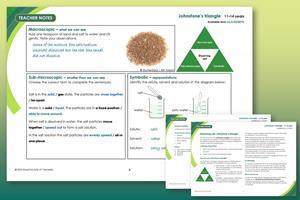
Download this
Use this student worksheet to introduce solutes, solvents and solutions at three different conceptual levels as learners observe dissolving salt.
View and download more Johnstone's triangle worksheets
Learning objectives
- State that solutions are formed when a solute is dissolved in a solvent.
- Explain this in terms of the particles present.
How to use Johnstone’s triangle
Use Johnstone’s triangle to develop learners’ thinking about scientific concepts at three different conceptual levels:
- Macroscopic: what we can see. Think about the properties that we can observe, measure and record.
- Sub-microscopic: smaller than we can see. Think about the particle or atomic level.
- Symbolic: representations. Think about how we represent chemical ideas including symbols and diagrams.
For learners to gain a deeper awareness of a topic, they need to understand it at all three levels.
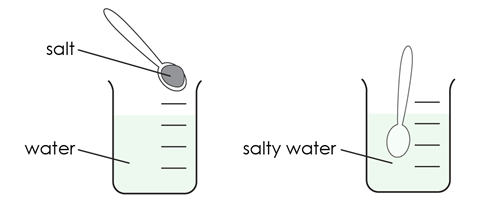
When introducing a topic, do not try to introduce all of the levels of thinking at once. This will overload working memory. Instead complete the triangle over a series of lessons, beginning with the macroscopic level and introducing other levels, in turn, once secure.
All of the levels are interrelated, for example, learners need visual representation of the sub-microscopic in order to develop mental models of the particle or atomic level.
Further reading
Read more about how to use Johnstone’s triangle in your teaching with these articles:
- Develop deeper understanding with models
- Improve students’ understanding with Johnstone’s triangle
- Practical ideas for using Johnstone’s triangle
Norman Reid’s book The Johnstone Triangle: The Key to Understanding Chemistry provides a more in-depth overview, the first chapter is available to read online.
Learner activity
Use this learner activity to encourage learners to observe and describe the macroscopic formation of a solution of salt in water.
Equipment per learner pair
- Spatula
- Mixture of sand and salt
- 100 ml beaker
- Water
Method
- Add water to the beaker.
- Add a spatula of the sand and salt mixture.
- Stir gently.
- Observe.
Scaffolding
It is important to share the structure of the triangle with learners prior to use. Tell them why you want them to use the triangle and how it will help them to develop their understanding. Use an ‘I try, we try, you try’ approach when you are introducing Johnstone’s triangle for the first time.
Next steps
To further develop learners’ thinking in all areas of Johnstone’s triangle, try our Developing understanding of solutions worksheet. This includes icons in the margin referring to the conceptual level of thinking needed to answer the question.
Downloads
Dissolving salt Johnstone's triangle student sheet
Handout | PDF, Size 0.23 mbDissolving salt Johnstone's triangle teacher notes and answers
PDF, Size 0.24 mbDissolving salt Johnstone's triangle student sheet
Editable handout | Word, Size 0.66 mbDissolving salt Johnstone's triangle teacher notes and answers
Editable handout | Word, Size 0.65 mb














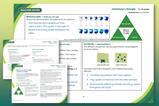
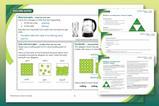
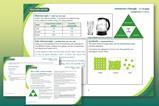






No comments yet